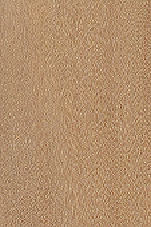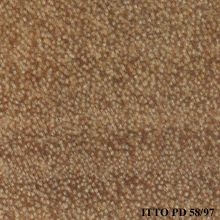
PUSPA/SIMARTOLU (Schima wallichii)
Trade Name
Puspa/Simartolu
Scientific Name
Schima wallichii Choisy
Family
Theaceae
Common Names
Schima; Needle wood; Simartolu; Mang tan; Voosi thuoosc (Vietnam); Thalo (Thailand); Champa dong (Thailand); Bunnak (Thailand); Mi (Laos); Khai sou (Laos); Boun nak (Laos); Laukya (Myanmar); Schima (Papua New Guinea); Samak (Malaysia); Gatal-gatal (Malaysia); Medang gatal (Malaysia); Madang gatal (Indonesia); Seru (Indonesia); Samak; Mang tan (Thailand); Kelinci padi (Brunei Darussalam); Medang gatal (Sabah); Puspa (Indonesia); Chilauni (India); Ta lo (Thailand)
Scientific Name Synonyms
Schima nornohae Reinw. ex Blume; Schima crenata Korth; Schima bancana Miq.; Gordonia wallichii DC.
Description Of The Tree
Botanical Description
It is an evergreen, medium-sized to large tree up to 47 m tall. The bole is cylindrical, branchless for up to 25 m, up to 125 cm in diameter, rarely with up to 1.8 m high steep buttresses.
Natural Habitat
In the Philippines endemic to Palawan, where it is confined to mossy scrub on ridges between 1,000 and 1,200 m of altitude. Elsewhere it grows in a wide range of habitats, but it is often found in primary lowland to montane forests, up to 2,400 m of altit
Plantations Available?
This species is widely grown in South East Asia. Plantations are reported in Malaysia; an industrial forest plantation of this species in South Sumatra is also reported.
Wood Identification
Anatomic Description Of Wood
Wood diffuse porous. Tangential diameter of vessel lumina 100 micras or less (very small). Occasionally tyloses common. Vessels per mm2 more than 20 (very abundant). Intervessel pits scalariform. Vessel-ray pits reticulate and/or foraminate. Occasionally helica Apotracheal axial parenchyma diffuse and/or diffuse in aggregates. Occasionally apotracheal axial parenchyma diffuse and/or diffuse in aggregates. Paratracheal axial parenchyma scanty and/or vasicentric. Occasionally prismatic crystals in chambered axial par 4 to 10 rays per mm (medium). Rays more than 10 per mm (abundant). Occasionally body ray cells procumbent with over 4 rows of upright and/or square marginal cells (Kribs-I). Body ray cells procumbent with mostly 2 to 4 rows of upright and/or square marginal Fibers with distinctly bordered pits.
-
 Wood Macro Photo Tangential Plane
Wood Macro Photo Tangential Plane
-
 Wood Micro Photo Of Transversal Section
Wood Micro Photo Of Transversal Section
Availability
Cites Status
Unrestricted
General Wood Description
Color
The heartwood is red brown or gray brown, indistinct from the paler sapwood.
COLOR INDEX (1=Black, 7=Light yellow,white)
5
Grain
Straight or interlocked grain is reported in this species.
Texture
The wood is typically fine in texture.
Natural Durability
This species is moderately resistant to biological attack.
Natural durability index (1= Very high durability, 7=Vey low durability)
3
Silica Content
Silica Content: It contains 0.1% silica. Silica Value: 0.1
Resistance To Impregnation
Preservation is reported to be moderately difficult.
Wood Physical Properties
Basic Density or Specific Gravity (O.D. weight/vol. green) (g/cm³)
0.65
Air-dry Density (Weight and volume at 12%MC) (g/cm³)
0.72
Total shrinkage Tangential (Saturated to 0%MC) (%)
9.6
Total shrinkage Radial (Saturated to 0%MC) (%)
4.7
Drying Defects
Ease of Drying: Drying is moderately easy; some particular care is needed. Drying Defects: No particular risks of drying defects, subject to normal drying conditions. Kiln Schedules: Schedule proposed as a reference by comparison with well known species taking into account to the general technological behavior of this species.
Dimensional stability ratio (Total Tangential Shrinkage %/Total Radial Shrinkage %)
2.1
Wood Chemical Properties
Wood Mechanical Properties
Bending Strength (MOR),12%MC (kgf/cm²)
999
Stiffness (MOE) 12%MC (kgf/cm²)
117542
Compression parallel to fiber 12%MC (kgf/cm²)
553
Compression perpendicular to fiber 12%MC (kgf/cm²)
56
Shear strength radial 12%MC (kgf/cm²)
129
Janka hardness (side) 12%MC (kgf)
545
Janka hardness (end grain) 12%MC (kgf)
346
Workability
Rotary Veneer Cutting
This timber is reported to be suitable for lamination.
Sliced Veneer
This timber is reported to be suitable for lamination.
Machining
Machining of this species is reported to be easy.
Turning
30
Nailing
Nailing properties of this wood are reported as good to fair. Pre-boring is recommended.
Polishing
It has a good polishing.
Response To Hand Tools
It has a good response to hand tools.
REFERENCED USES
End Uses Summary
EXTERIOR GENERAL, bridges, rails, crossarms, HOUSING GENERAL, frames, panelling, FURNITURE AND CABINETS, PLYWOOD AND VENEER, TURNING, TOOLS, agricultural tools, PACKING, CONTAINERS, truck bodies, truck flooring, NAVAL CONSTRUCTION, OTHER AND MUSICAL INSTRUMENTS, axle, shingle, moldings
Exterior General
- 1 - Tabela de resultados de ensaios fisicos e mecanicos
Bridges
- 2 - 25 madeiras da amazonia de valor comercial, caracterizacao, macroscopica, usos comuns e indices qualificativos
Rails
- 6 - Physical and mechanical properties of Eucalyptus deglupta Blume grown in Costa Rica
Crossheads Crossarms
- 7 - Maderas latinoamericanas. II, Quercus alata Q. costaricensis y Q. eugeniaefolia
General Housing
- 10 - Silica in Timbers
Frames
- 16 - Woods of the World
Paneling
- 18 - W3TROPICOS Missouri Botanical Garden
Furniture Cabinets
- 21 - Tropical timbers of the world. Part III-Southeast Asian and Oceanian Species.
Panels, Veneers
- 25 - Directory of Timber Trade Malaysia
Turning
- 30 - Embassy of Honduras in Japan
Tools
- 42 - Utilización Industrial de Nuevas Especies Forestales en el Perú.
Agricultural Tools
- 44 - Atlas of Peruvian Woods
Packing
- 45 - Recopilación y Análisis de Estudios Tecnológicos de Maderas Peruanas
Truck Body
- 53 - Timbers of the New World
Truck Flooring
- 54 - Bulletin of the Government Forest Experiment Station N.157: Identification of Tropical Woods
Shipbuilding
- 55 - Tropical Timber Atlas of Latin America
Axles
- 73 - Handbook of Hardwoods
Shingles
- 77 - Amazonian Timbers, Characteristics and Utilization Volume I; Tapajós National Forest
Molding
- 79 - Padronização da Nomenclatura Comercial Brasileira das Madeiras Tropicais Amazônicas, Sugestão
Please Provide Information To View Producer Information